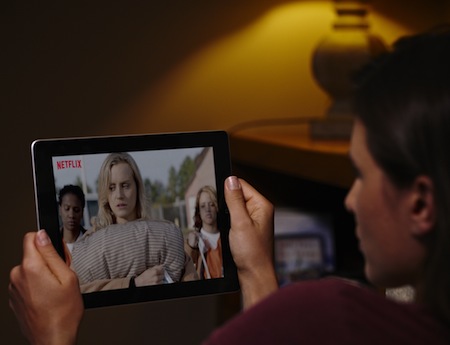Guest Blog: The Evolution of Media Consumption: How TV Companies Can Stay Relevant

Having been involved in the media industry for the better part of two decades, I’ve served in a number of executive roles for several media services and solutions companies. In that capacity, I’ve helped TV channels implement new-business strategies, centralize their media operations and become valuable service providers. During this time I’ve learned that an increasing number of broadcasters are placing more emphasis on their core business of creating high-quality content and launching additional services to keep their audiences engaged, while looking to generate new revenues. More and more, TV channels look for a partner to take responsibility for the technical, operational, logistical and distributional needs, as well as taking care of new delivery methods, monetization, infrastructure and applications.
With TV channels and other traditional broadcasters looking to expand their reach and become ever more cost-efficient, I am increasingly seeing trends for them to outsource a number of their media services. From my perspective as a senior executive of a global digital media services provider, this is happening largely as a result of the technical and operational complexities they encounter. An outsourced partner can take responsibility for a broadcaster’s technical, operational, logistical and distributional needs, as well as handling new delivery methods, monetization, infrastructure and applications – freeing up TV channels to focus on their core business of creating high-quality content and creating revenues. So, how did we get here?
As consumers, we all do it. We watch content on our tablets, stream programs on our laptops and share videos on our smartphones. Viewers have more and more options when it comes to video content.
The role of the TV channel has changed with advances in technology, and continues to evolve to meet the dynamic needs of viewers. Although the traditional TV channel has a place in this shifting media landscape, it still has a long way to go in the age of digital, easy-to-access content.
How Is TV Channel Content Viewed?
It used to be that families gathered around their TVs to watch programs, as they aired, on a few major networks. As technology advanced, viewers gained more channels, more content to choose from, and more options to view that content. Digital pay TV service providers brought viewers a variety of programming, and, with DVRs, VOD services and multiple screens delivery, the freedom to watch content at the time of their choosing.
Today’s viewing habits are centered on convenience. (Note this “Screen Wars” study from Nielsen.) Viewers have more devices to watch the content they want, from wherever they are, at any time. Consumers are using these devices to break away from their TV sets and watch programs on-the-go.
The smarter way to stay on top of broadcasting and cable industry. Sign up below
Streaming services such as Netflix and Hulu give viewers even more control over their content, and on-demand services allow them to watch shows whenever they want, albeit in a more limited way depending on their viewing devices.
Content reaches viewers through a variety of methods, including direct-to-home services, paid satellite, cable and IPTV services, as well as via online channels.
TV channels continue to act as the content aggregator or programmer, as audiences still require help to organize their viewing schedule, however they face the challenge of keeping viewers’ attentions, requiring an integrated approach to media operations.
Key Challenges for TV Channels
With more content migrating to the Internet, programming needs to be more relevant, adaptable and accessible. Specifically, TV channels need to:
- Adjust programming in a more dynamic fashion to better understand users’ viewing habits and behaviors
- Create new, advanced content interaction and engagement, with and around the content before, during and after the broadcast time, in order to keep it relevant
- Leverage the power of social media and utilize this audience to gain higher viewership and engagement
- Move away from operating in media silos (e.g., where staff have responsibility for TV, online is outsourced, etc.). It’s not possible to fully connect all the dots this way
- Enhance monetization options by expanding audience reach and business opportunities, leveraging multiple big data sources effectively
- Use new technologies like catch-up TV, VOD and multi-screen delivery to give viewers the flexibility to access TV programming at any time, on any device, with the feeling they didn’t miss a thing
- Create mechanisms to serve up similar or related content that viewers may also enjoy watching
- Leverage new advertising inventories of TV channel programming to target relevant audiences and increase advertising revenues
Innovation is key. This includes employing people with specific skill sets, offering improved and dynamic programming, and creating the best viewing experience and user engagement applications and services.
TV channels can analyze viewing data from a wide variety of sources and platforms, adjust their content accordingly and optimize advertising revenues from new inventories.
Furthermore, they need to sell their channels and content to as many service providers as possible, including cable, DBS, IPTV, mobile operators, ISPs, VOD and OTT. Selling syndicated content and programs should also be addressed, as well as streamlining the handling of content rights.
In this changing landscape, TV channels need to rethink their operational model, cost structure and partnerships.
Elad Manishviz, CMO of RR Media, brings more than 15 years of business leadership and experience in the digital media, entertainment, video and the advertising market segments. Mr. Manishviz has held a variety of executive positions in global media-related software, communications and Internet-focused companies. Prior to joining RR Media, Mr. Manishviz was the CEO of Wallstream. Prior to that, he served as VP of products and strategy at DG-MediaMind. Previously, he was a VP of products at NDS (now part of Cisco). Mr. Manishviz holds an Executive MBA from the Hebrew University and Bachelor degree in media and management from the College of Management in Tel-Aviv.
